What is an LED? Well, it's not too complicated. Let me explain it right away with a visual. Oh~
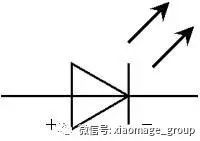
After looking at this image, you might think this isn’t the typical LED you see in a model kit. You're absolutely right. An LED stands for Light Emitting Diode. The symbol we’re seeing here isn’t the actual LED itself. Take a look at the image below for a clearer understanding.
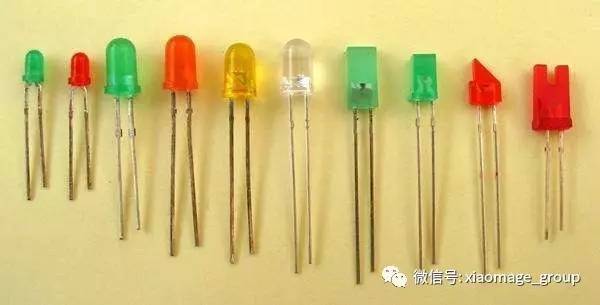
There are so many different types! Colors vary, shapes differ — it’s quite a range. To make things easier, let's classify them. Otherwise, it's hard to remember all of them.
LEDs can be categorized by color: red, green, blue, yellow, white, and more. They can also be classified based on their physical structure:
- In-line (Through-hole) LEDs: These come in cylindrical, flat, or shaped forms. Cylindrical ones are usually 3mm or 5mm in diameter.
- Surface Mount Device (SMD) LEDs: Common packages include 0603, 0805, 1206, 2835, etc.
Additionally, LEDs can be divided based on power:
- High-power LEDs: Used mainly for general lighting.
- Low-power LEDs: Typically used as indicators on circuit boards, like power or activity lights.
Now that we've covered the basics, let's dive into how to actually use a low-power LED. For example, take a 3mm red LED. To use it properly, you need to understand its characteristics. Here’s a datasheet for a standard red through-hole LED. From the voltage-current curve, we can see that the cut-off voltage is around 1.6V. Below that, the LED doesn’t conduct. Once the voltage reaches 1.8V, the current starts flowing at about 10mA. As the voltage increases, the current increases proportionally. However, there’s a limit — the maximum forward continuous current is 25mA. At that point, the forward voltage is about 2.1V. So, the operating range is roughly: 0.01 mA ≤ IF ≤ 25 mA, and 1.6 V ≤ UF ≤ 2.1V.
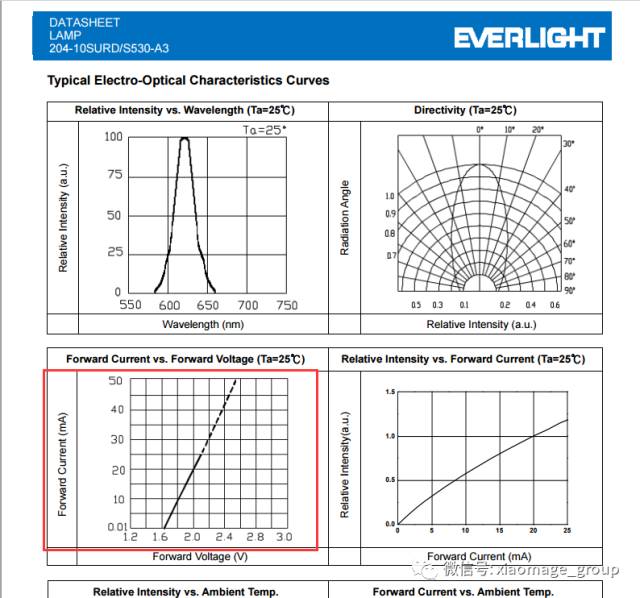
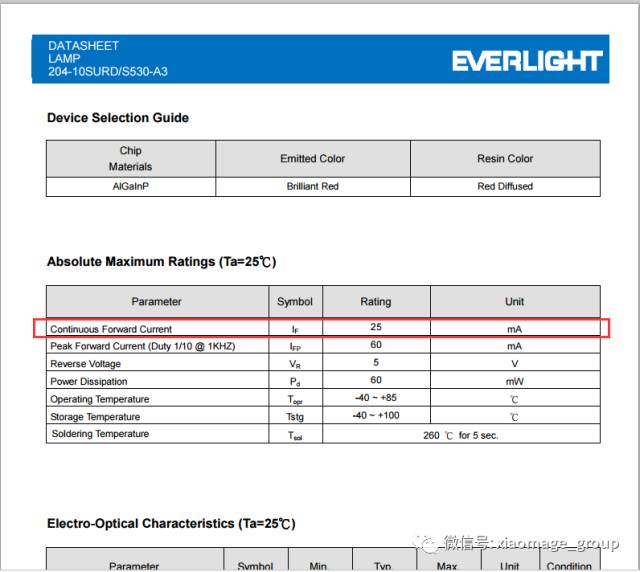
But how do you actually use it? Let's say you have a 5V power supply. If you connect the LED directly, it will draw too much current and could be damaged. To prevent that, you need a current-limiting resistor. This resistor helps control the current flow and protects the LED. It's a simple but essential part of the circuit.
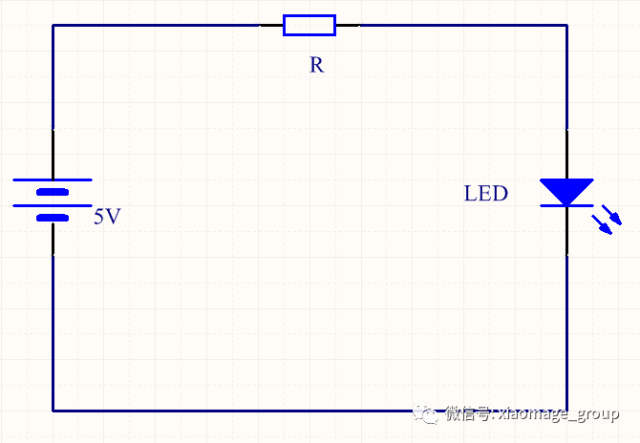
This is the most common and basic LED circuit. Now, the question is: How do you choose the right resistor? Based on the LED's forward voltage (UF) and forward current (IF), you can calculate the resistance. For example, if your power supply is 5V, and the LED has a UF of 2.1V and IF of 25mA, then:
Voltage across the resistor = 5V – 2.1V = 2.9V
Resistance = 2.9V / 25mA = 116Ω
In practice, people often use a UF of 1.7V and IF of 10mA for simplicity, which gives a resistor value of around 330Ω. This ensures safe operation and brightness without overloading the LED.
Now, if you're using an LED as a power indicator, this setup works perfectly. But what if you want to use it as a status indicator on a board? That’s even simpler. The circuit looks like this:

By applying high and low signals from the control side, you can turn the LED on and off. When the signal is high, the LED is off. When it's low, the LED turns on. Repeating this creates a blinking effect. The frequency of the blinking depends on how long the signal stays high or low.
And that’s how you use an LED — simply, effectively, and safely. Now, do you feel confident enough to try it yourself?
Tinned Copper Wire,Tinned Copper,Tin Coated Copper Wire,Tin Plated Copper Wire
Sowell Electric CO., LTD. , https://www.sowellsolar.com